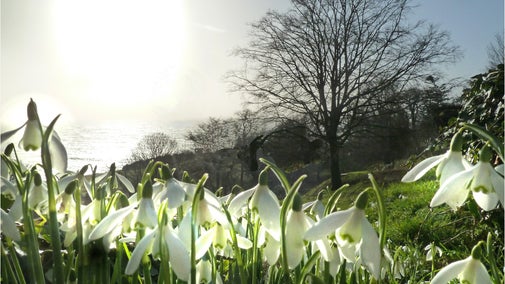
Plas yn Rhiw's collections
Explore the objects and works of art we care for at Plas yn Rhiw on the National Trust Collections website.

From a 17th-century house to an appealing 19th-century manor house, discover more about Plas yn Rhiw’s residents and its restoration throughout the years.
The 17th-century building was occupied by John Lewis, whose family descended from a ninth-century King of Powys and had been at Rhiw since the Tudor times.
The house passed down through the family to Jane Lewis, who married William Williams, the owner of Plas yn Rhiw in 1811. Their daughter married Captain Lewis Moore Bennet, and it was probably their marriage that led him to remodel and enlarge the house in 1820.
The north kitchen wing was added in the mid-19th century and the estate remained in the family until 1874, when it was bought by Thomas Roberts and occupied by a succession of tenants. One included Lady Strickland who may have laid out the garden.
Plas yn Rhiw was later passed to Mr Roberts’s son and eventually abandoned.
In 1939 the Keating sisters acquired Plas yn Rhiw. Originally from Nottingham, Eileen, Lorna and Honora were three unmarried sisters, who, together with their widowed mother Constance, came to live in Plas yn Rhiw in 1939.
Their devoted efforts gradually restored the building, which was in a serious state of disrepair, re-created the garden, and tirelessly campaigned to protect the environment.
The sisters were ardent supporters of the Council for the Protection of Rural Wales and other conservation organisations. They waged campaigns of vigorous opposition against certain proposals; especially against construction of a nuclear power station in Edern.

Before the Keating sisters moved into Plas yn Rhiw it was overgrown with brambles, so densely blocking the front door that they had to climb through the front window.
At nearly an acre in size, its characterised by a series of spaces enclosed by box hedging and linked by grassed and gravel paths. The garden is below the house on a wooded hillside, providing a favourable sheltered site for a wide variety of species that thrive in the mild climate.
Unfortunately, the Keatings kept few notes and no diaries of their work in the garden, except for this note by Honora, found pencilled on some old plant catalogues.
- Honora Keating
The magnolia is often the highlight of the garden today, both in early spring and in in August/September when it’s covered with crimson fruit.
In 1946 the sisters donated the surrounding land to us in memory of their parents, Constance and William Keating. It wasn’t until 1952 when the Keatings donated the rest of the property.
The sisters opened the house to the public (before it was donated to the Trust) and they continued to live there until Lorna died in 1981.
Plas yn Rhiw remains the same today, as if the sisters never left. Look out for the datestone on the front of the house; inscribed ‘1634. IL’.

Explore the objects and works of art we care for at Plas yn Rhiw on the National Trust Collections website.
The garden at Plas yn Rhiw has a lot to offer through the seasons, from delightful snowdrops to an orchard of fruits and enchanting flowers.

Visit Plas yn Rhiw in Gwynedd to find out how the past tenants made this house into a comfortable home.

Find out how a field was transformed into a wildlife-rich habitat at Plas yn Rhiw in Gwynedd.

Plas yn Rhiw is a one pawprint rated place. Here is a guide for what to expect when bringing your dog to Plas yn Rhiw in Gwynedd in Wales.
